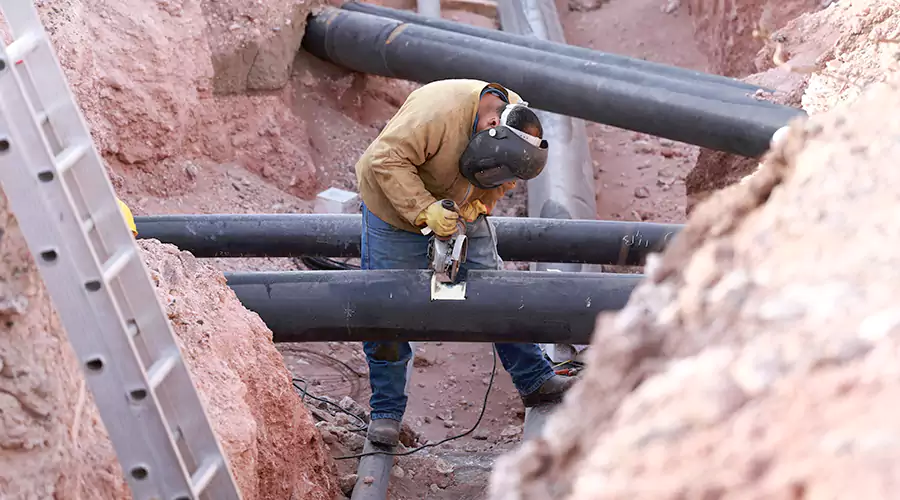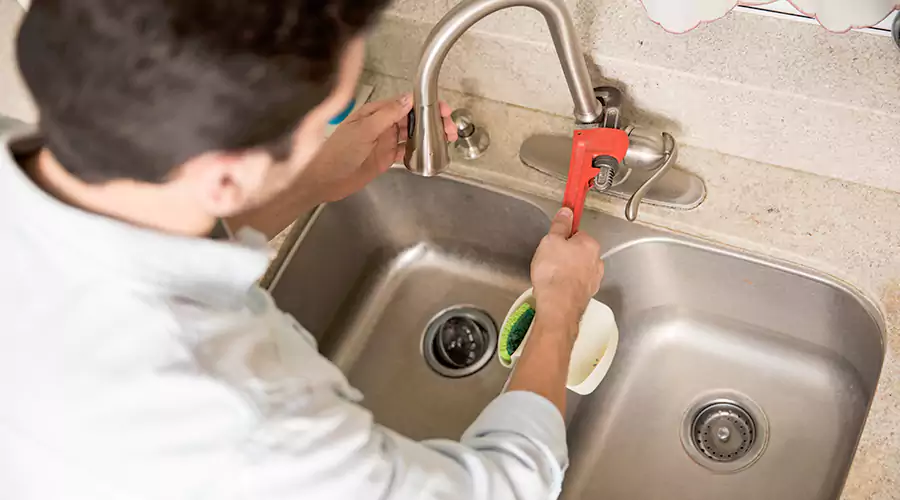Introduction
Underground pipes are essential to every plumbing system, carrying water, waste, and sewage safely beneath your property. Because they’re hidden, many homeowners don’t realize there’s a problem until serious issues appear — like soggy lawns, foul odors, or low water pressure.
Underground pipe damage can be caused by several factors, from shifting soil to corrosion, and if left unchecked, it can lead to costly repairs and property damage.
In this guide, we’ll explain the most common causes of underground pipe damage, how to spot early warning signs, and the modern repair solutions professionals use to fix the problem without major digging.
1. What Causes Underground Pipe Damage
Underground plumbing is constantly under pressure — not just from water flow, but also from the environment around it. Over time, these external and internal stresses can lead to cracks, leaks, or full pipe failure.
a. Shifting Soil or Ground Movement
Natural soil movement from temperature changes, heavy rain, or drought can cause underground pipes to bend or crack. Expanding and contracting soil puts stress on joints and weak points, leading to leaks.
b. Tree Root Intrusion
Tree roots naturally seek moisture, and tiny cracks or loose joints in pipes release just enough water vapor to attract them. Once roots invade, they can grow inside the pipe, blocking or even breaking it.
c. Corrosion and Aging
Older metal pipes, especially those made of galvanized steel or cast iron, are prone to corrosion. As pipes deteriorate, they weaken and eventually develop holes or leaks.
d. Poor Installation
Improperly installed pipes — such as those not buried at the correct depth or with poorly sealed joints — can shift or separate over time, leading to leaks and misalignment.
e. High Water Pressure
Consistently high water pressure can stress underground pipes, causing small fractures that worsen over time.
f. External Pressure or Impact
Heavy vehicles, construction, or digging near underground lines can crush or puncture pipes if proper precautions aren’t taken.
2. Warning Signs of Underground Pipe Damage
Because underground pipes are out of sight, detecting damage early requires paying attention to indirect signs.
Watch for:
- Unexplained water bill increases
- Puddles or wet spots in your yard, especially when it hasn’t rained
- Foul sewer odors around your property
- Low water pressure or inconsistent flow inside the home
- Slow drains or frequent backups in multiple fixtures
- Cracked pavement or sunken ground over buried pipes
If you notice any of these warning signs, it’s time to call a professional plumber for inspection.
3. How Professionals Detect Underground Pipe Damage
Modern plumbers use advanced, non-invasive tools to locate and diagnose underground pipe problems precisely.
a. Camera Inspection
A waterproof video camera is inserted into the pipe, transmitting real-time footage to identify cracks, clogs, or collapsed sections without excavation.
b. Acoustic Leak Detection
Sensitive microphones detect the sound of water escaping from pipes underground.
c. Thermal Imaging
Infrared cameras spot temperature differences caused by leaking hot or cold water lines.
d. Pressure Testing
By isolating specific lines and monitoring for pressure loss, plumbers can pinpoint leaks with high accuracy.
These modern diagnostic tools eliminate guesswork and minimize disruption to your property.
4. Modern Repair Solutions
Gone are the days when fixing an underground pipe meant tearing up your lawn or driveway. Today’s trenchless repair technologies make the process faster, cleaner, and more affordable.
a. Pipe Lining (Cured-in-Place Pipe or CIPP)
This technique involves inserting a resin-coated liner into the damaged pipe. Once inflated and cured, it forms a new, seamless pipe inside the old one.
Benefits:
- No major digging required
- Restores structural integrity
- Prevents future leaks and corrosion
b. Pipe Bursting
When the pipe is severely damaged or collapsed, a new pipe can replace it without digging an open trench. A bursting head breaks apart the old pipe while simultaneously pulling a new one into place.
Benefits:
- Ideal for complete replacements
- Works with various pipe materials
- Long-lasting and durable
c. Spot Repairs
If only a small section is damaged, plumbers can excavate a limited area and repair or replace that segment, saving time and cost.
d. Hydro Jetting
Before repair, hydro jetting may be used to clean out roots, debris, or buildup, ensuring a smooth interior surface for relining or replacement.
5. Preventing Future Underground Pipe Damage
While some causes are unavoidable, proper maintenance and precautions can minimize risk.
Prevention tips:
- Schedule annual plumbing inspections
- Avoid planting large trees near underground lines
- Install root barriers around sewer lines if needed
- Maintain consistent water pressure
- Call a professional before digging for landscaping or construction
- Replace aging pipes proactively before they fail
Regular care helps extend your plumbing system’s lifespan and prevents emergency repairs.
6. Why Professional Repair Is Essential
DIY underground pipe repair isn’t practical or safe. Licensed plumbers have the expertise, tools, and technology to identify and fix the issue accurately — without unnecessary damage to your property.
Professional repair ensures:
- Code-compliant, long-lasting solutions
- Accurate diagnosis with advanced inspection tools
- Minimal disruption to landscaping and structures
- Warranty-backed repairs for peace of mind
Conclusion
Underground pipe damage can lead to costly and stressful problems if ignored, but with today’s trenchless technologies, repairs are faster, cleaner, and more efficient than ever.
If you suspect a leak, blockage, or damage beneath your property, contact a professional underground pipe repair specialist. They can quickly diagnose the issue, provide a lasting solution, and restore your plumbing system — without the mess of traditional digging.
 Reviews
Reviews



